MODULAR ASSEMBLIES
//Advanced Algorithmic Design Strategies
Modular Assemblies explores iterative logics that aim to create adaptive architectural networks through the aggregation of modular components. Opposed to already pre-determined spaces, the components are designed as modules with different characteristics that can provide diversity and create spatial compositions once introduced into the assembly process.
This is achieved through limiting the number of connection possibilities according to the analysis of the heuristics, which indicate a tendency of the first and third component to create new geometries when self-aggregating , and a potential for vertical growth in the system when integrating the second component.
Within an urban context and scale, the growth can provoke new topological forms that can be assigned architectural functions and qualities, such as inhabitable enclosures or circulation paths and transition areas. This additional layer is addressed in the post processing section, where architectural elements such as partition walls, facades, canopies or courtyards are introduced.
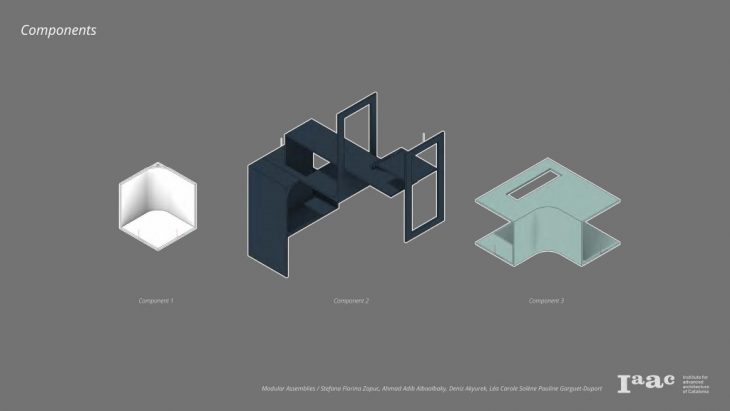
Components 1, 2 and 3
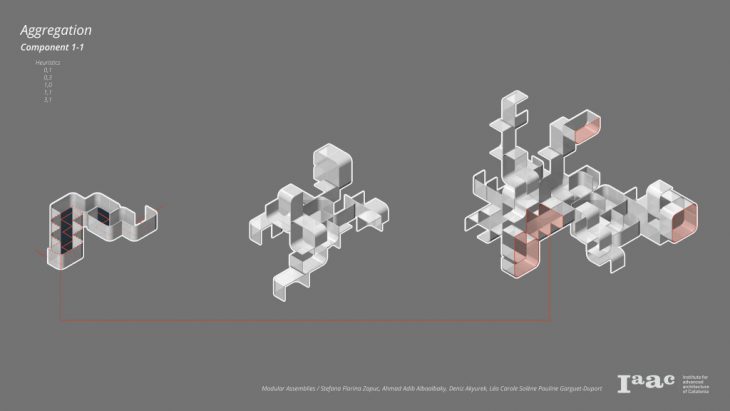
Aggregating component 1 with itself
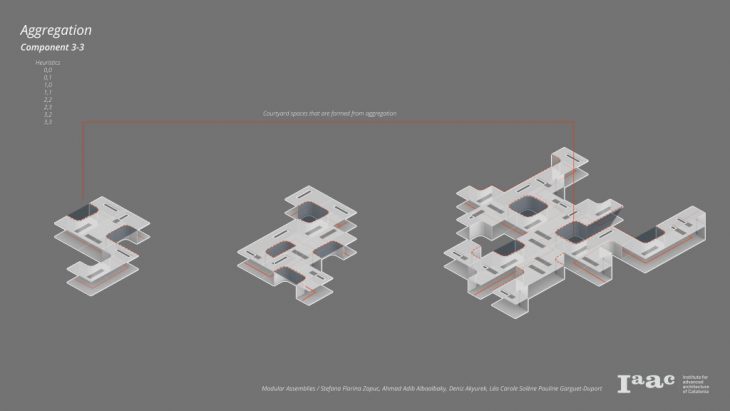
Aggregating component 3 with itself
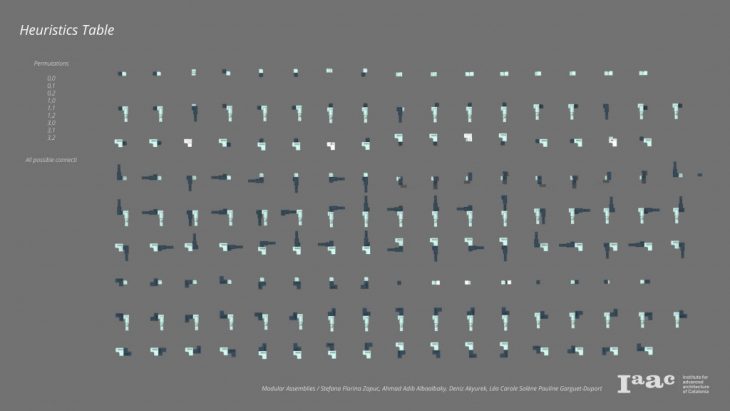
Heuristics Table
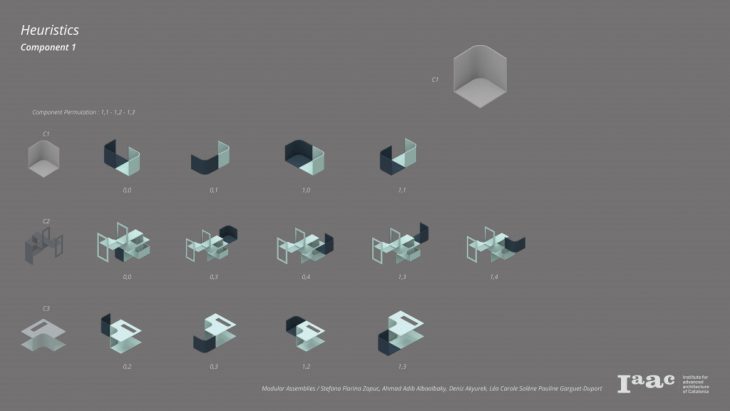
Chosen heuristics of component 1
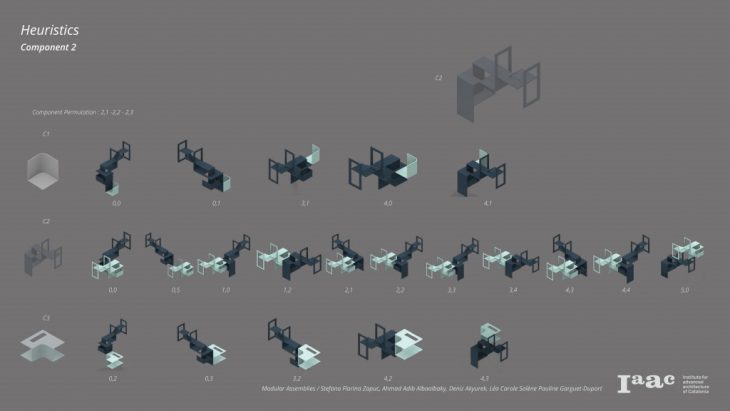
Chosen heuristics of component 2
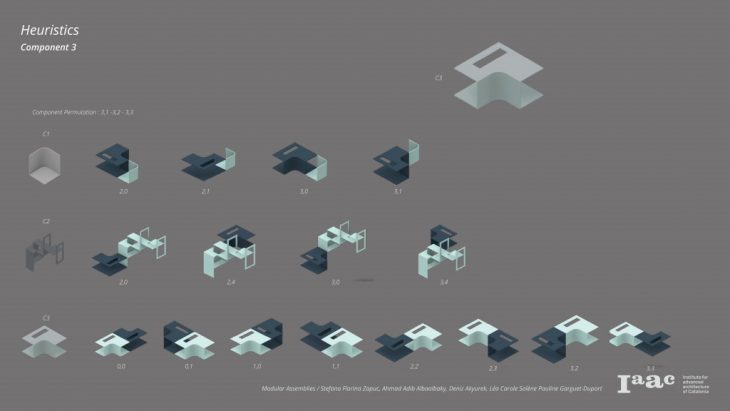
Chosen heuristics of component 3
After achieving the right heuristics, we ran the code to try and understand what the different aggregation results we would be able to achieve. Each of the Iteration tables demonstrates the aggregation starting with the different components.
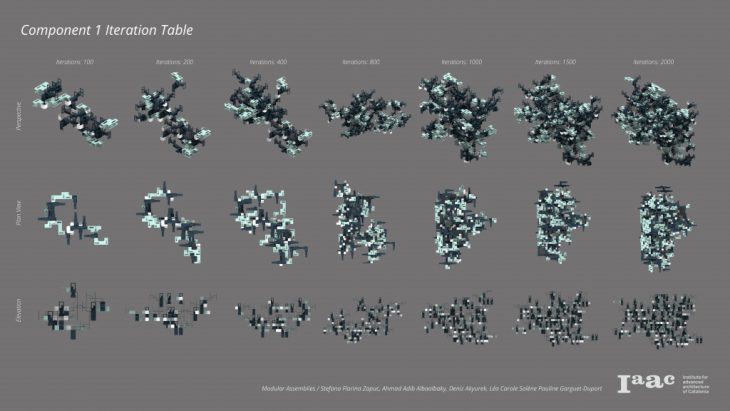
Component 1 Iteration Table
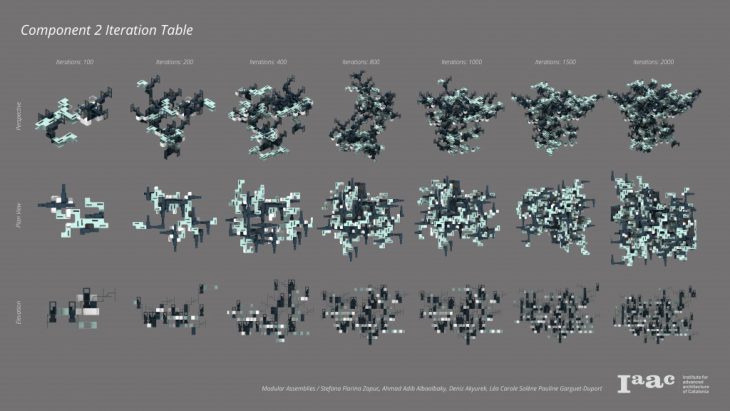
Component 2 Iteration Table
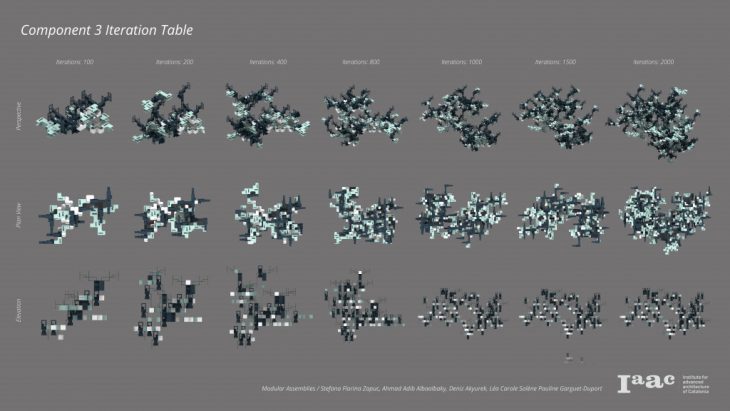
Component 3 Iteration Table
From the tables we were able to notice specific behaviours that the components were producing in the aggregation.
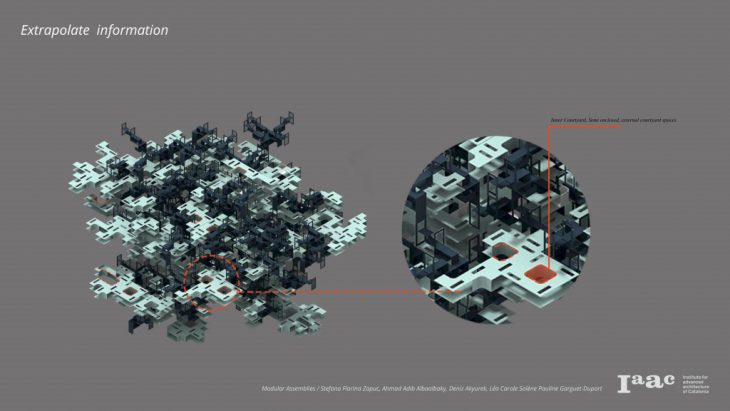
After finding the behaviours we were able to start designing additional elements for each of the components that could be added after the aggregation is complete. This would allow spaces to be more defined and read as a whole system.
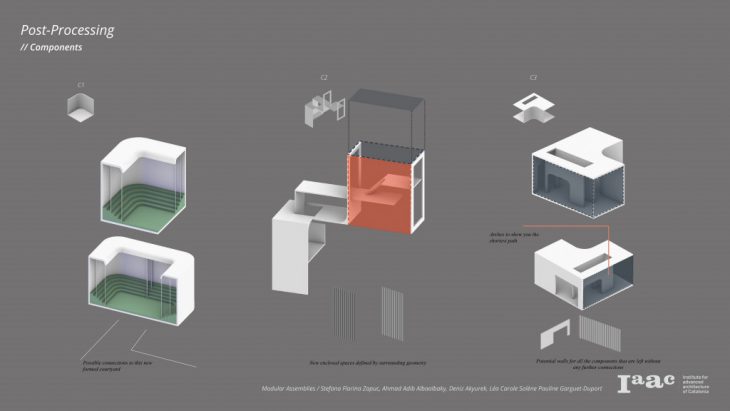
Post processing for each of the components
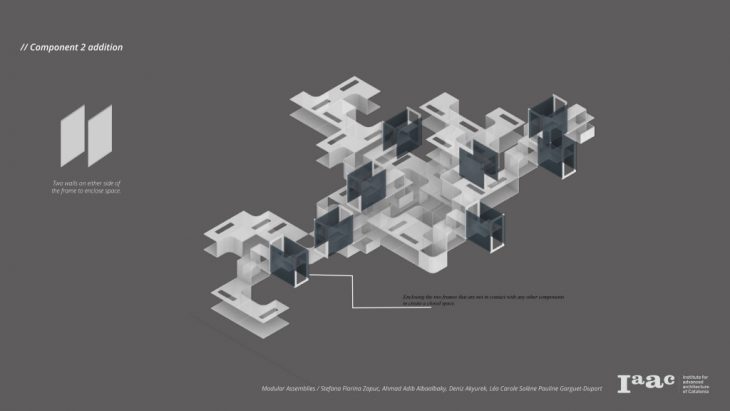
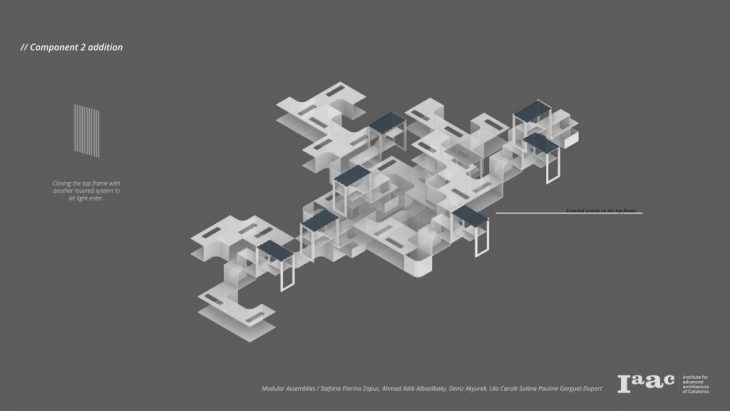
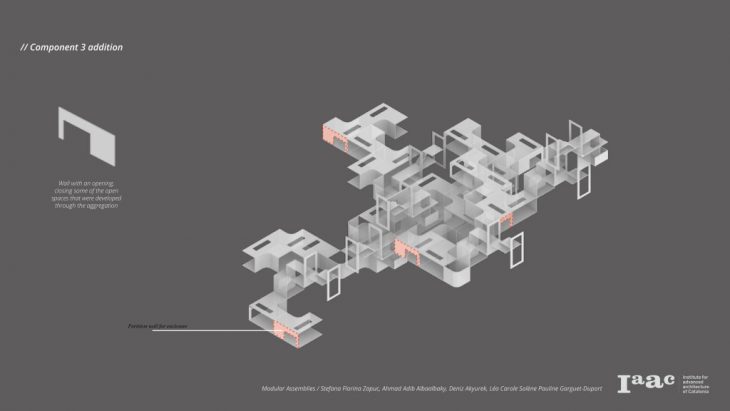
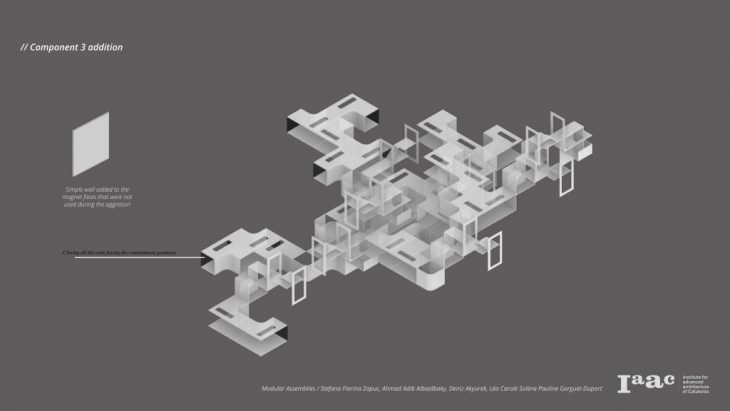
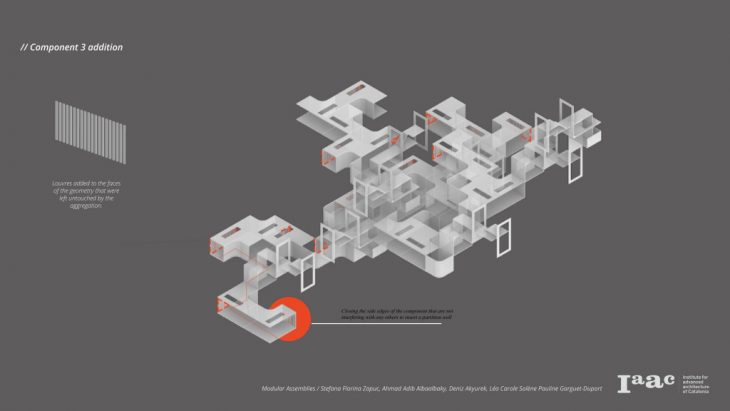
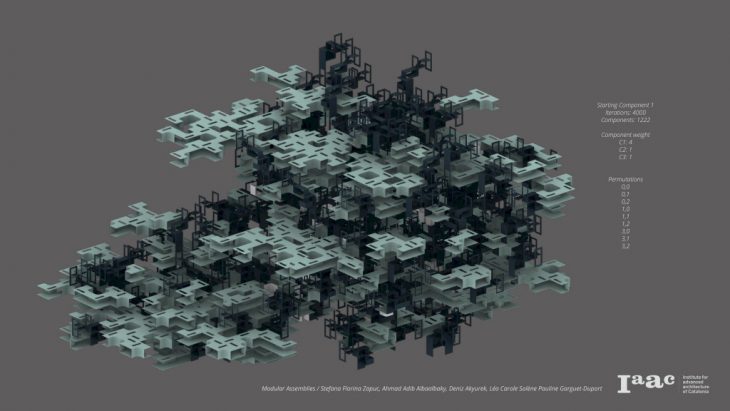
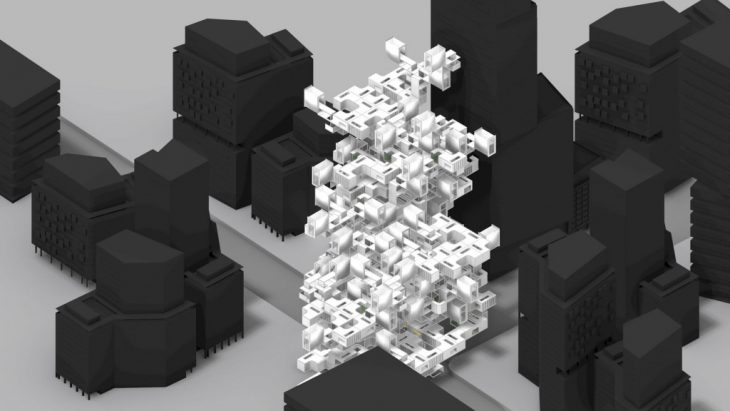
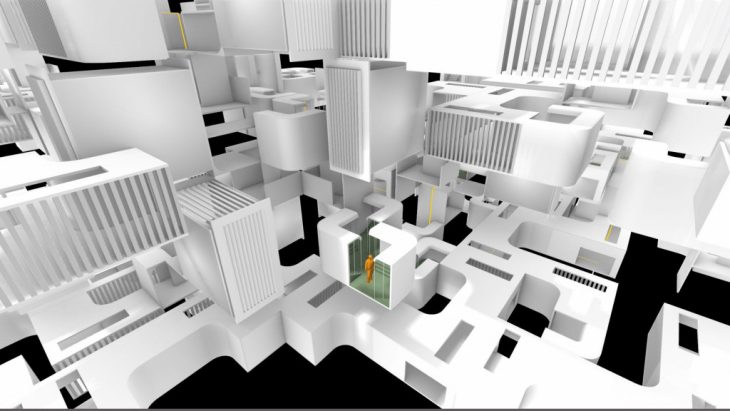
</p>
MODULAR ASSEMBLIES is a project of IaaC, Institute for Advanced Architecture of Catalonia
developed at Master in Advanced Architecture, in 2020 by:
Students_Stefana Florina Zapuc, Ahmad Adib Albaalbaky, Deniz Akyurek, Léa Carole Solène Pauline Garguet-Duport,
Faculty_Alessio Erioli, Andrea Graziano